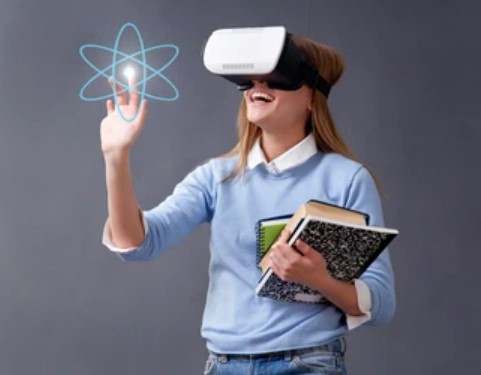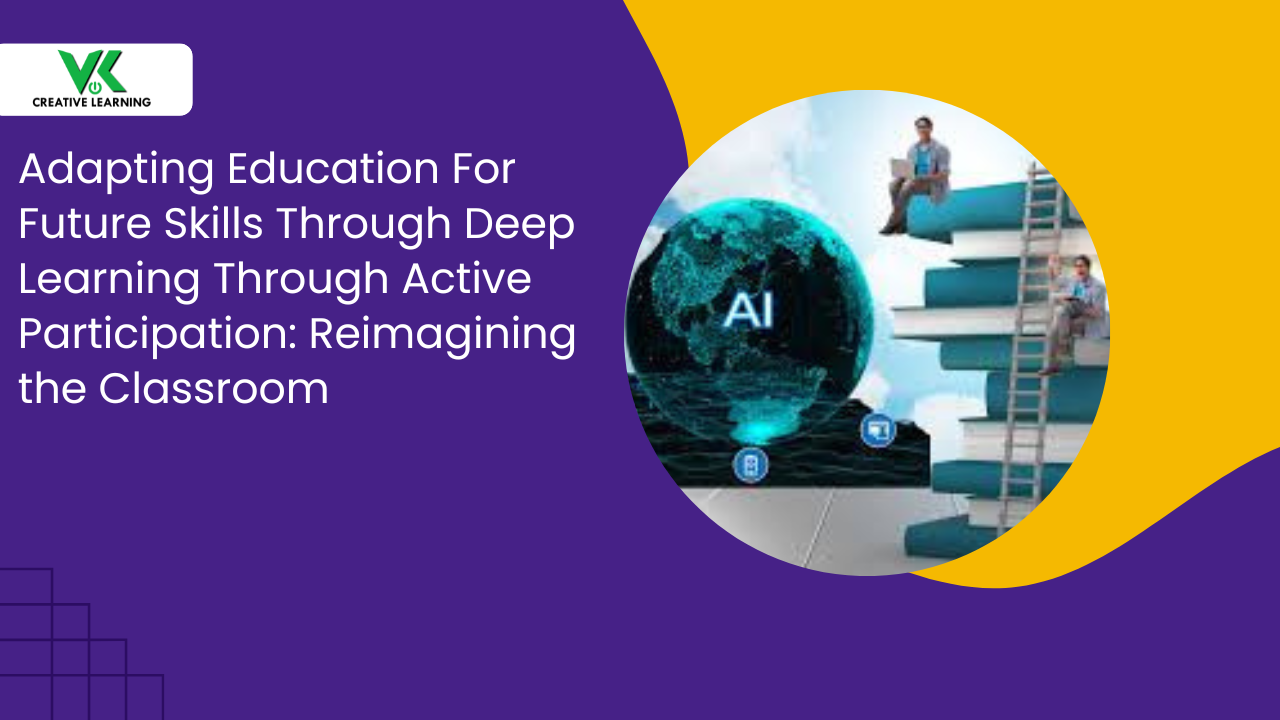How Can Educational Institutions Benefit from VR-Powered eLearning?
February 24, 2023
eLearning has brought a fresh revolution in the education sector and helped the way students access and engage with educational materials. Introduction of Virtual Reality (aka VR) technology too has brought about the next wave of transformation to classroom sessions. VR-Powered eLearning offers a more interactive learning experience when compared to traditional methods, catering to students with an unprecedented immersive level of engagement. By blending Virtual Reality into eLearning, educational institutions can benefit immensely from the innovative approach; especially in improving students’ performance and rendering overall satisfaction with the learning process.
For instance, by utilizing the potential of VR in their eLearning curriculum, eLearning developers can recreate real-world scenarios in virtual simulations. This initiative would turn out to be a boon during exams as they would have a thorough comprehension of the topics. Additionally, VR allows learners to have a look at events, places like remote archaeological sites or underwater ocean worlds, and scientific phenomena--which may not be possible for every child in real life. The VR-based gamification components can also help keep learners motivated and remain engaged as they go through the coursework. Finally, VR power-driven by analytics reports in eLearning solutions can aid schools to keep a track of learners' progress and adjust content accordingly.
What Makes VR the Ideal Medium for Learning?
Virtual reality (VR), known as the go-to medium for acquiring knowledge, has widely gained acceptance in the eLearning industry--courtesy of its useful features like unparalleled immersive levels of engagement, fast adaptability, and portability; explained below in detail. Certain research studies have indicated that immersion into VR-created experiences can increase understanding massively, as opposed to traditional learning methods. Through wisely curated content, educators can gain a comprehensive understanding about students' interests and finely-tuned content to keep them engaged in the eLearning material.
Engagement Factor: Virtual Reality (VR) has the potential to metamorphose education in a big way, making it highly engaging to make understanding easy. With its powerful immersive capabilities, VR creates an environment in which learners can engage with content in a completely novel way. When compared to the traditional methodology of teaching--be it lectures or textbooks, VR allows learners to explore an altogether different world and interact with different objects in them. Since students are actively participating in VR world instead of passive observation, such a level of engagement boosts higher levels of learning plus retention.
Convenience And Portability: VR technology offers an awesome level of convenience and portability--all you need to wear is a VR-based head-mounted display device. With minimal equipment requirements on hand, students can get to learn from their preferred location, anytime. This unique feature breaks down geographical constraints and renders new possibilities for those in remote areas--hardly having an access to sufficient resources. In addition since learners are able to use their own devices, it provides an opportunity for self-paced instruction allowing learners to move through different learning modules without overexerting themselves.
Personalization: Due to the adaptive nature of VR technology in eLearning, educators can tailor-make content to cater to the exact needs of each learner. By enabling teachers to modify visuals and audio based on individual student preferences, VR helps bridge any gaps between the learning material and the user's understanding. This ensures that lessons remain both meaningful and enjoyable for every participant.
The content can be tailored to fit individual needs and interests by adjusting topics, visuals, and difficulty levels according to the learner’s age and skill level. This makes it more conducive for individuals who may have difficulty keeping up with regular classes due to various reasons such as physical disability or language barrier. It also provides an opportunity for self-paced instruction allowing learners to move through different sections without feeling rushed or overwhelmed.
Adaptability: Due to the adaptive nature of VR technology in eLearning, educators can tailor-make content to cater to the exact needs of learners. Furthermore, teachers can suggest modifications in visuals--such as diagrams and infographics, and audio based on students' overall preferences. This way Virtual Reality can play a pivotal role in bridging any learning gaps between the course material and students' understanding. This would ensure that eLearning content remains appealing to everyone.
How Can Educational Institutions Benefit from VR-Powered eLearning?
E-Learning has been abuzz with the dawn and success of Virtual Reality (VR), rendering a richer experience for their students. This new approach opens up exciting chances for teachers and learners alike, from providing meaningful simulations to conducting field trips virtually, and we shall explore them further.
Enhancing Learning Outcomes: Virtual reality (VR) is growingly being seen as a viable tool for eLearning, and, well, guess what? VR-powered experiences help students better grasp complex situations and positively impact learning outcomes. By engaging their senses in an immersive platform, learners can better comprehend and commit to the memory of new information. That is, students can go on virtual field trips to explore new locations from around the world with considerable ease and realism than ever before or go on to visit historical monuments to explore distant galaxies. Moreover, by creating interactive 3D simulations and visuals, complicated concepts can be easily explained to foster critical thinking skills, allowing them to make meaningful connections of the topics being explained. Similarly, medical students could conduct realistic-type of surgeries in simulations with detailed visuals akin to real-life surgeries.
Scalability: Virtual Reality has the potential to metamorphose eLearning in terms of providing educators with low-cost but highly scalable solutions. Elaborately put, simulated environments can be generated to provide real-world scenarios--rendering an understanding of practical applications of the theory introduced to many learners at the same time. Thus VR in eLearning can enable instructors to reach more students and make them understand intricate topics by offering virtual classrooms or setting up interactive learning experiences.
Increasing Accessibility: With VR-powered eLearning, students from all around the world can access immersive learning experiences, without traveling. Students can explore and engage in distant upskilling opportunities with access to instructors and other students through eLearning platforms. This means that they needn't worry about traditional barriers, specifically, time constraints, language fluency, or geographical boundaries--just log on and get started.
Conclusion
The implementation of VR-Powered eLearning in educational institutions can be incredibly advantageous, as it is a buzzing technology that has been shown to massively increase engagement and help students retain key information comprehensively.
VK Creative Learning is a seasoned eLearning provider of such solutions, allowing schools and institutes to take advantage of its vast experience in the creation of amazing eLearning courseware. With VR infused within eLearning, learners are given more choices to explore multiple topics on their own terms, while experiencing virtual environments and simulations--something not possible with traditional learning methods. Consequently, they turn more passionate and motivated about learning, leading to enhanced levels of knowledge absorption and maximum retention.




